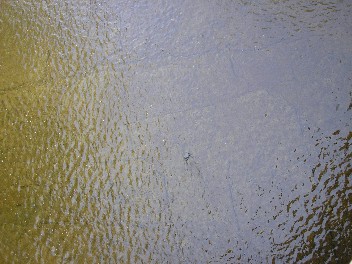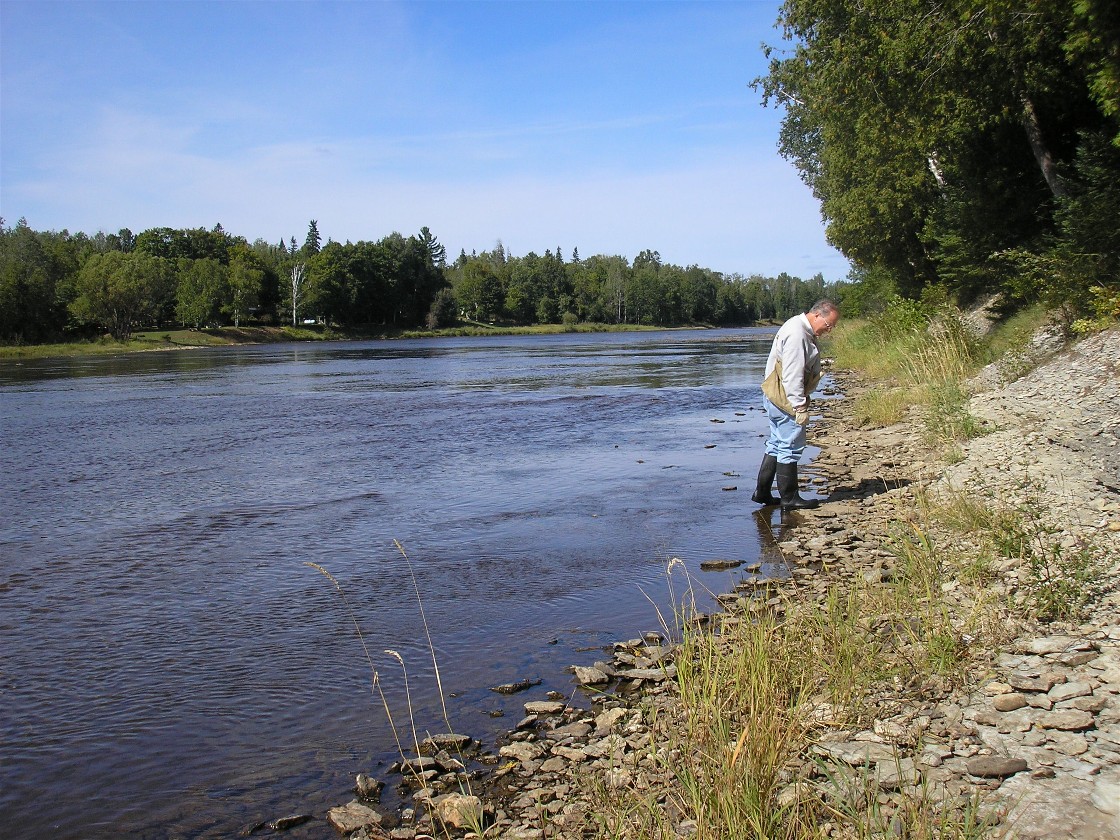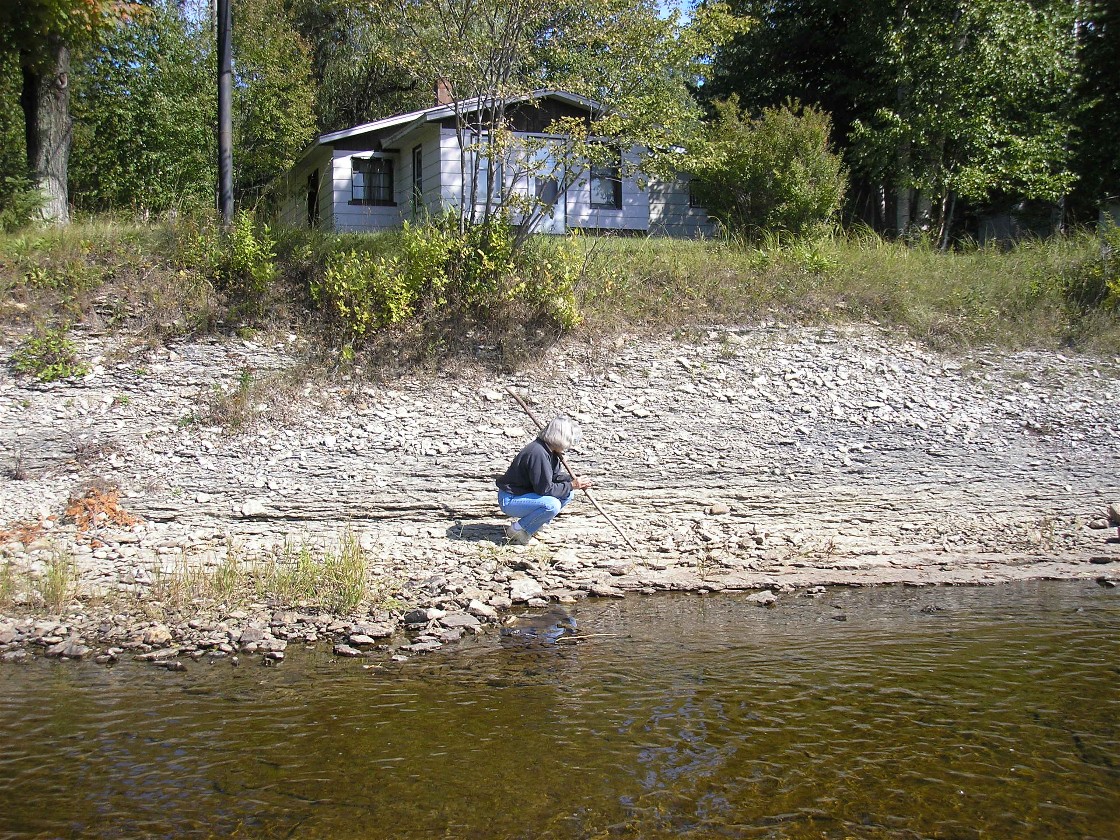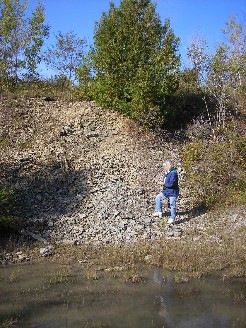
A MICHIGAN U.P. RECONNAISSANCE
Outcrops of Ordovician rocks in Michigan are restricted to a band of formations in the Upper Peninsula. Considerable work was done to determine individual formations, correlation with other North American Ordovician units and to a lesser extent to document the paleontological content of these rock units back in the late 1920s through the 1940s. Some of this work culminated with the publication of the 1926 Contributions from the Museum of Geology The Richmond Formation of Michigan and the 1952 Michigan Geological Survey Publication 46 entitled The Middle and Upper Ordovician Rocks of Michigan both authored by R. C. Hussey and the 1958 Journal of Paleontology article: Calymenid Trilobites from the Ordovician Rocks of Michigan authored by E. C. Stumm and E. G. Kauffman..
My wife Lory and I had planned a trip to Mackinac Island in Lake Huron to meet friends for a week. The most direct route for us to get there was over the Upper Peninsula and so it afforded us the opportunity to visit a couple of these outcrops to evaluate the trilobite potential in the area. Our planned meeting time was to be 3 PM on Sunday afternoon so Lory and I planned to leave early Saturday morning, drive to Escanaba, spend the afternoon on the rocks, get up Sunday morning, spend an hour or so more checking outcrops and end up at the ferry by 3 PM.
We arrived in Escanaba in the early afternoon and grabbed a quick lunch and headed for our first location. The City derives its name from the Escanaba River that it sits beside. The Escanaba River is named for an Ojibwa Indian word meaning “flat rock” presumably expressing much of the rivers bottom that happens to be the relatively flat lying Ordovician limestone in the area. Our first location was in the river at one of the few bridges north of the tiny hamlet of Cornell. Here the Trenton (most likely Rocklandian) Chandler Falls Formation crops out in both the floor of the river as well as along its banks. Looking over the bridge one can easily understand the name Escanaba (see photographs).

We waded up the river from the bridge approximately 300 yards. According to Hussey this would place us in the Conglomerate Zone of the Chandler Falls Formation and as Hussey described we were still below the Maclurites Zone but starting to observe these large gastropods. We collected 8 of them along the bank at this position. The rocks dip gently toward the southeast here and we did not venture further up-stream (approximately .5 mile) to observe the contact of the Chandler Falls with the underlying Bony Falls Formation.



The second location we checked on was another river exposure and abandoned railroad cut, this time on the Whitefish River, about 33 miles north of Escanaba on U. S. Highway 41 near the tiny community of Trenary, Michigan. We wanted to check this area because it is the type area for the species Amphilichas staeberli, a genus that I am currently studying.
By the time we reached the river exposure on the Whitefish we knew we would not have enough time to explore it and the old, abandoned railroad cut so we took a bunch of pictures from the bridge and moved on to the railroad cut.

There are several short vertical exposures on County Road 103 as you go east off U. S. Highway 41 just south of Trenary but the old railroad bed is now an ATV trail that parallels CR 103, on the east, when CR 103 turns north. The railroad cut was reported to expose 21 feet of the Conglomerate Zone of the Chandler Falls Formation. The zone was described by Hussey as argillaceous limestone and shale. This underlies the approximately 5-6 feet exposed in the CR 103 roadcut almost directly above the railroad cut. The exposure is still present, some has disappeared under vegetation but much is still exposed. The outcrop, being fairly shaley develops a lag deposit of small (3-8 inch) slabs of weathered limestone over its surface but careful examination of the more shaley exposures reveal a still prolific fauna.

We were able to spend only an hour collecting a biased faunal sample from the exposed zone. We collected several parts that could be identified as belonging to the following genera: Calytaulax, Isotelus, Flexicalymene and Hemiarges.
Hussey (1952) lists 11 trilobite genera from the Chandler Falls Formation. The trilobites that Hussey recognized are: Calytaulax, Isotelus, Flexicalymene, Hemiarges, Illaenus, Ceraurus, Anataphrus, Thaleops, Amphilichas, Bumastoides and Hystricurus. The fact that we were able to collect 4 of the 11 in such a short period of time suggests that the formation warrants additional collecting pressure.
It’s interesting to note that Hussey’s list includes Thaleops ovata. T. ovata has been listed as occurring in the Galena Formation in Wisconsin and the Kimmswick Formation of Missouri and the Maquoketa Formation of Iowa but in reality it is restricted to the Blackriverian Platteville Formation in the Type Area and does not persist into the overlying Chatfieldian or up into the Richmondian. I think the same case occurs in the Northeast. If, in fact its presence can be verified from the Chandler Falls then it would argue for an earlier age than Trenton for at least a portion of the Chandler Falls Formation.
Russell Hussey (1952) reported that bentonites could be found near the contact between the Bony Falls and Chandler Falls Formations as well as in the upper Chandler Falls. Contact with the Michigan Geological Survey, Warren Huff of the University of Cincinnati and Pat McLaughlin of the Wisconsin Geological Survey each shared that no work has been done on these bentonites regarding age dates or attempts to correlate them into the Diecke, Millbrig or any of the Chatfieldian bentonites of the Upper Midwest or Northeast. The formation is a good candidate for further research, both in order to place it more accurately into regional correlations and also on its contained fauna.
October, 2007